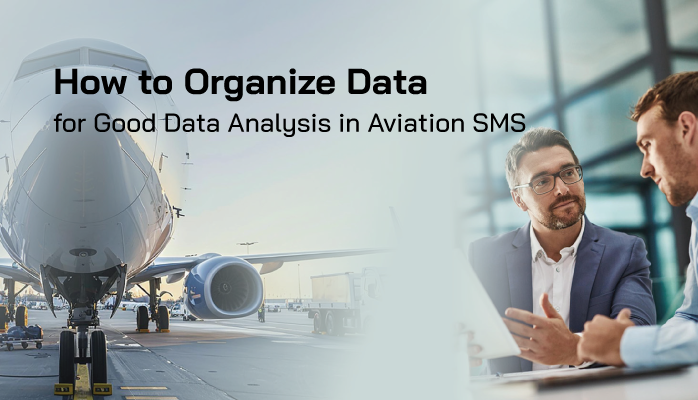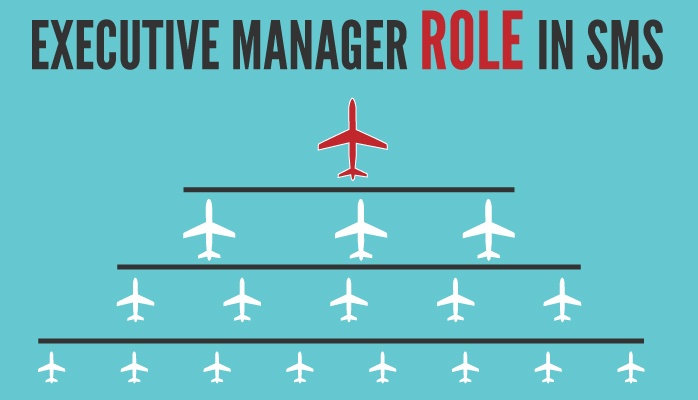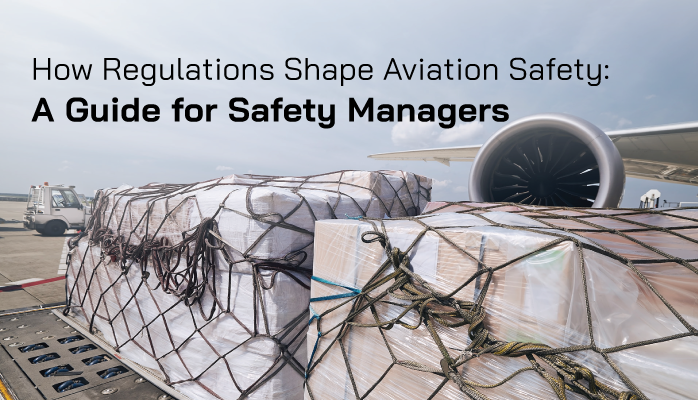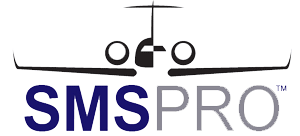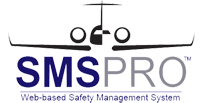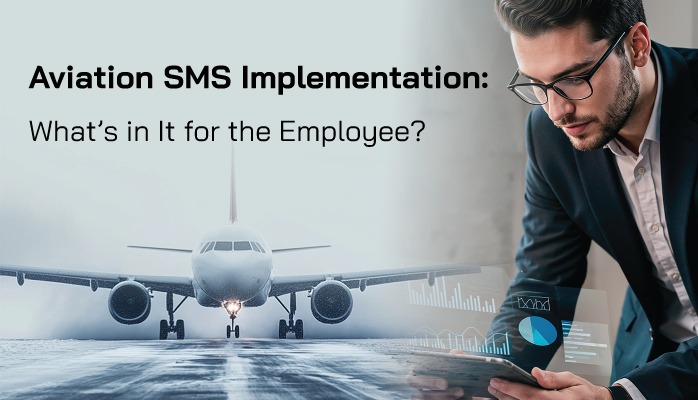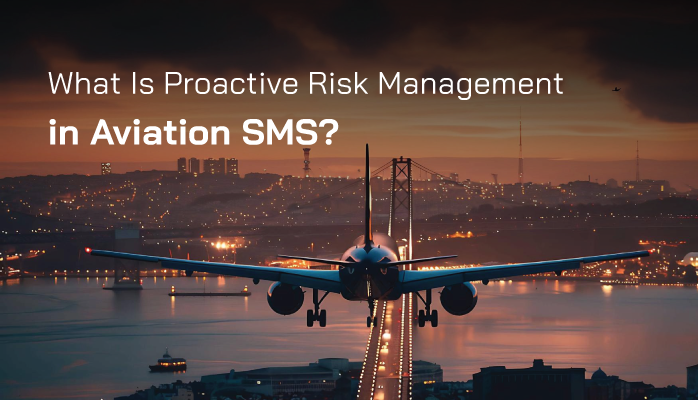In the fast-paced, data-intensive world of aviation, safety is non-negotiable. For aviation safety managers and accountable executives, implementing an effective Safety Management System (SMS) is critical to ensuring operational safety and regulatory compliance. However, one of the biggest challenges new safety managers face is analyzing SMS data to make informed, data-driven decisions.
Without a clear starting point, the wealth of data can feel overwhelming.
Read More
Topics:
Key Performance Indicators,
Aviation SMS Database,
3-Safety Assurance,
Risk Management Software,
2-Safety Risk Management,
Risk Management Training,
FAA Compliance
For new aviation safety managers, preparing for Safety Management System (SMS) audits can feel overwhelming, especially when it comes to coaching accountable executives. These senior leaders, often focused on operational and financial priorities, may not be familiar with the intricacies of SMS or their critical role in ensuring compliance. Yet, their understanding of regulatory frameworks like ICAO Annex 19, FAA SMS guidelines, and EASA SMS requirements is essential for fostering a robust safety culture and passing audits.
Read More
Topics:
4-Safety Promotion,
3-Safety Assurance,
1-Safety Policy,
Risk Management Training,
FAA Compliance,
Safety Culture
For new aviation safety managers, preparing for a Safety Management System (SMS) audit can feel like navigating uncharted skies. A critical challenge is ensuring that accountable executives—senior leaders like CEOs, directors, or operations managers—understand and fulfill their SMS responsibilities.
These executives are pivotal in demonstrating compliance to regulators like the FAA, EASA, or ICAO, yet many lack the time or technical background to dive into the aviation SMS details.
Read More
Topics:
Aviation SMS Implementation,
4-Safety Promotion,
3-Safety Assurance,
1-Safety Policy,
2-Safety Risk Management,
FAA Compliance,
Safety Culture
How Regulations Shape Aviation Safety
Aviation safety is a cornerstone of the industry, ensuring millions of passengers and crew members reach their destinations securely each year.
For aviation safety managers, understanding the intricate relationship between regulations and safety outcomes is critical. Regulations set the framework for operational standards, but their impact—both positive and challenging—requires careful navigation to maintain safety while fostering efficiency.
This article explores how regulations influence aviation safety, offering insights for safety managers to optimize compliance and enhance safety protocols.
Read More
Topics:
3-Safety Assurance,
FAA Compliance
Aviation Safety Management Systems (SMS) provide a structured framework to manage risks, ensuring safe operations across airlines, airports, and aviation service providers. A critical pillar of SMS is safety assurance, which focuses on monitoring, evaluating, and improving safety performance. For aviation safety managers, mastering safety assurance best practices is essential to maintain compliance, mitigate risks, and foster a proactive safety culture.
Read More
Topics:
3-Safety Assurance,
Risk Management Training,
FAA Compliance
Aviation safety hinges on proactive risk management, and Safety Management Systems (SMS) provide the framework to achieve this. Within the aviation SMS ecosystem, two voluntary programs—Flight Operational Quality Assurance (FOQA) and Aviation Safety Action Program (ASAP)—play pivotal roles in enhancing safety.
These programs, widely adopted in the U.S. under the Federal Aviation Administration (FAA) and aligned with global standards like those of the International Civil Aviation Organization (ICAO), offer unique approaches to hazard identification and risk mitigation.
Read More
Topics:
4-Safety Promotion,
3-Safety Assurance,
2-Safety Risk Management,
Risk Management Training,
FAA Compliance
In the fast-paced world of aviation, ensuring safety is paramount. The aviation Safety Management System (SMS) has emerged as a critical tool for managing safety risks systematically, helping organizations proactively identify hazards and mitigate risks.
Three key regulatory bodies—the International Civil Aviation Organization (ICAO), the Federal Aviation Administration (FAA), and the European Union Aviation Safety Agency (EASA)—each provide SMS standards that guide aviation safety practices. While these standards share a common goal of enhancing safety, they differ in their approach, applicability, and specific requirements.
Read More
Topics:
4-Safety Promotion,
3-Safety Assurance,
1-Safety Policy,
2-Safety Risk Management,
FAA Compliance
Challenges in Aviation SMS Implementation
Implementing a Safety Management System (SMS) in aviation is critical for ensuring compliance with International Civil Aviation Organization (ICAO) standards and enhancing safety performance. However, the journey to effective aviation SMS implementation is fraught with challenges. From staff resistance to regulatory complexity, operators face hurdles that can delay or derail their efforts. Fortunately, SMS software solutions like SMS Pro offer tools to streamline the process. In this article, we explore the top five challenges in aviation SMS implementation and how SMS Pro helps operators overcome them, with tailored tips for small operators and large airlines.
Read More
Topics:
Aviation SMS Database,
3-Safety Assurance,
Risk Management Software,
FAA Compliance
For new aviation safety managers, preparing for a Safety Management System (SMS) audit is a daunting task. One of the most challenging aspects is coaching accountable executives—senior leaders like CEOs, directors, or operations managers—to play their part in demonstrating SMS compliance.
These executives often lack the time or technical expertise to fully grasp SMS concepts, yet regulators from the FAA, EASA, or ICAO expect them to articulate their role in overseeing safety.
Read More
Topics:
Aviation SMS Implementation,
3-Safety Assurance,
Risk Management Training,
FAA Compliance,
Safety Culture
The Need for a Proactive Safety Culture
Utility aviation, including power line inspections, wildfire monitoring, and infrastructure surveys, operates in high-risk environments where safety is paramount. The Federal Aviation Administration reports that 70% of utility aviation incidents stem from human factors, costing millions annually, according to the International Air Transport Association.
A proactive safety culture, where employees anticipate and address risks, is critical to prevent incidents and ensure compliance with ICAO Annex 19, FAA Part 5, Part 91, and Part 135. SMS Pro’s aviation SMS software, with its Part 5 Fulfillment modules, fosters this culture through anonymous reporting, comprehensive training, and real-time analytics, improving safety reporting by 40% in utility operations.
Read More
Topics:
4-Safety Promotion,
FAA Compliance
